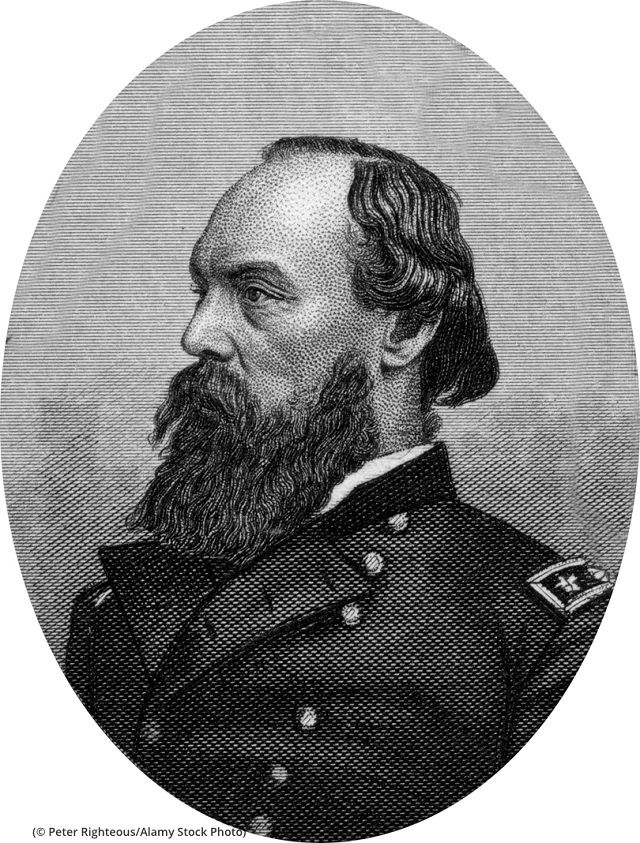Juneteenth, or June 19th, is an annual holiday to commemorate the end of slavery in the United States.
On this date in 1865, slavery ended in Texas nearly three years after President Lincoln’s Emancipation Proclamation, issued September 22, 1862.
Texas, which was part of the Confederacy during the U.S. Civil War, had long ignored Lincoln’s proclamation. So Army General Gordon Granger and 2,000 federal troops traveled to the port of Galveston, Texas, to make the announcement to Texans.

John Buttre’s engraving of Union Major General Gordon Granger, circa 1866 (© Peter Righteous/Alamy Stock Photo)
On June 19, 1865, Granger stood on the balcony of Galveston’s Ashton Villa and publicly read the contents of “General Order Number 3,” beginning with these words: “The people of Texas are informed that in accordance with a Proclamation from the Executive of the United States, all slaves are free.”
Former slaves in Galveston rejoiced in the streets.
Juneteenth celebrations would begin as a tradition in Texas the next year. “In the early days, this involved the practical concerns of reuniting families,” historian Henry Louis Gates Jr. told ShareAmerica. “But then and now, it serves as a rallying point for black people.”
Granger’s order did not immediately change the lives of the formerly enslaved people in Texas. “Slave owners waited as long as possible to announce the news, with many of them trying to get a final harvest in,” Gates said. And representatives of the Freedmen’s Bureau, a federal agency established to help millions of newly freed African Americans in the aftermath of the Civil War, didn’t arrive in Texas until September, a few months after Granger’s order.
“Ex-slaves who took it upon themselves to leave their plantations often faced violent punishment, including murder, for their perceived transgressions,” Gates said. “This brutal retaliation indicated that white Texans were not going to accept black freedom,” and foreshadowed further oppression.
Despite the setbacks and violence in Texas, the newly freed people transformed June 19 into an annual ritual of triumph against injustice.
A holiday’s evolution
When freed people in Houston were planning the first Juneteenth celebration in 1866, they were blocked by the city’s rapidly expanding racial-segregation laws from using public parks. But by the 1870s they had pooled $800 and bought 10 acres (four hectares) of land, which they named Emancipation Park.

Children play in Houston’s Emancipation Park following the park’s $34 million renovation in 2017. (© Michael Stravato/The New York Times)
In recent years, the Houston City Council declared the park a historic landmark. In 2019, the renovated Emancipation Park — still used for Juneteenth celebrations and much else — became a site in UNESCO’s Slave Route project, highlighting its role in illuminating the effects of slavery.
Juneteenth celebrations feature family and community gatherings, often with readings of the Emancipation Proclamation, religious sermons and spiritual songs.

Parade participants enjoy a 2019 Juneteenth festival in Milwaukee, Wisconsin. (© Dylan Buell/VIBE/Getty Images)
“Juneteenth is one of our greatest examples of how a grassroots movement can take charge of its own history and use it to beneficial ends,” Gates said. “How much progress have we made, or failed to make, since slavery? How do we convey to our children and grandchildren the significance of their history? And how can we celebrate those who came before us, overcoming incredible odds so that we can live the lives we live today, imperfect as they may be? Juneteenth offers a chance for reflection on the past and consideration for the future.”
Banner image: The Texas African American History Memorial, located in Austin, depicts African American history from the 1500s to the present — including Juneteenth. (© Acritely_Photo/Alamy Stock Photo)







COMMENTS0
LEAVE A COMMENT
TOP